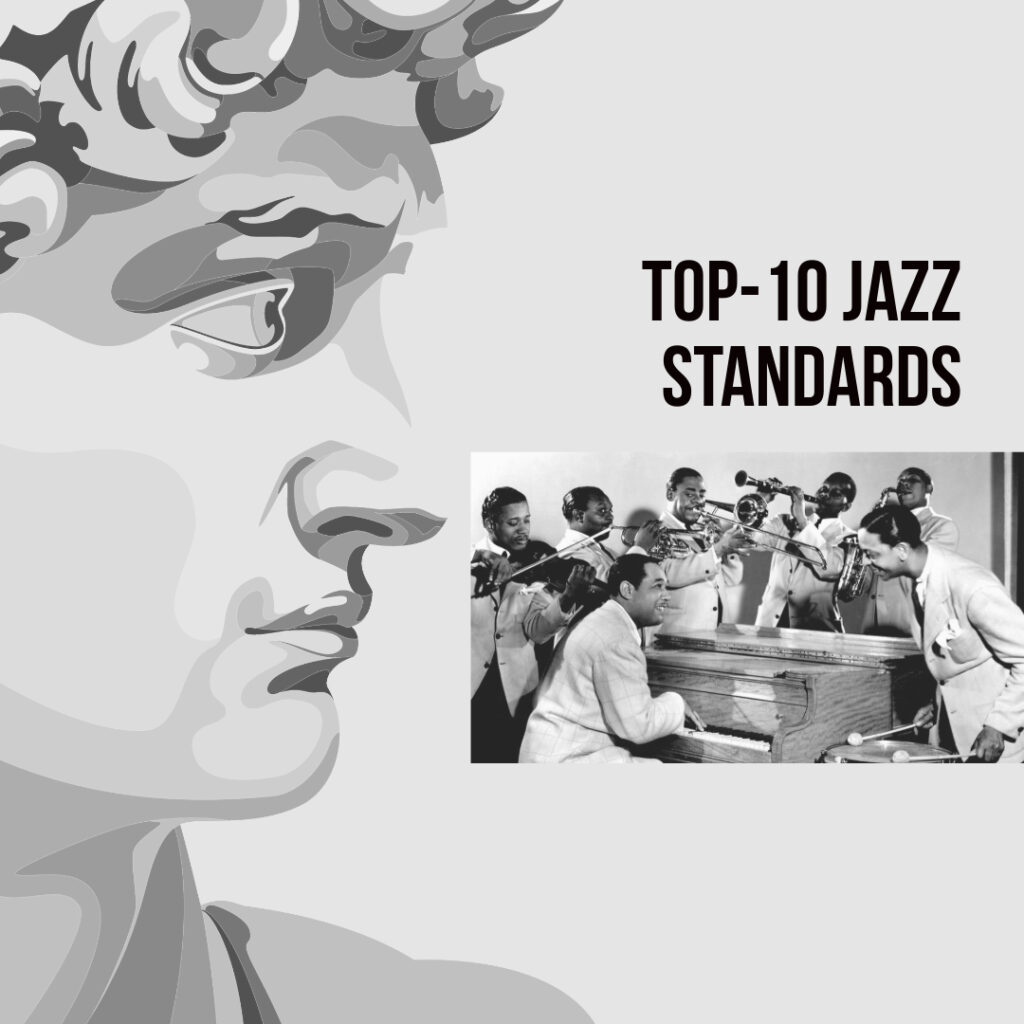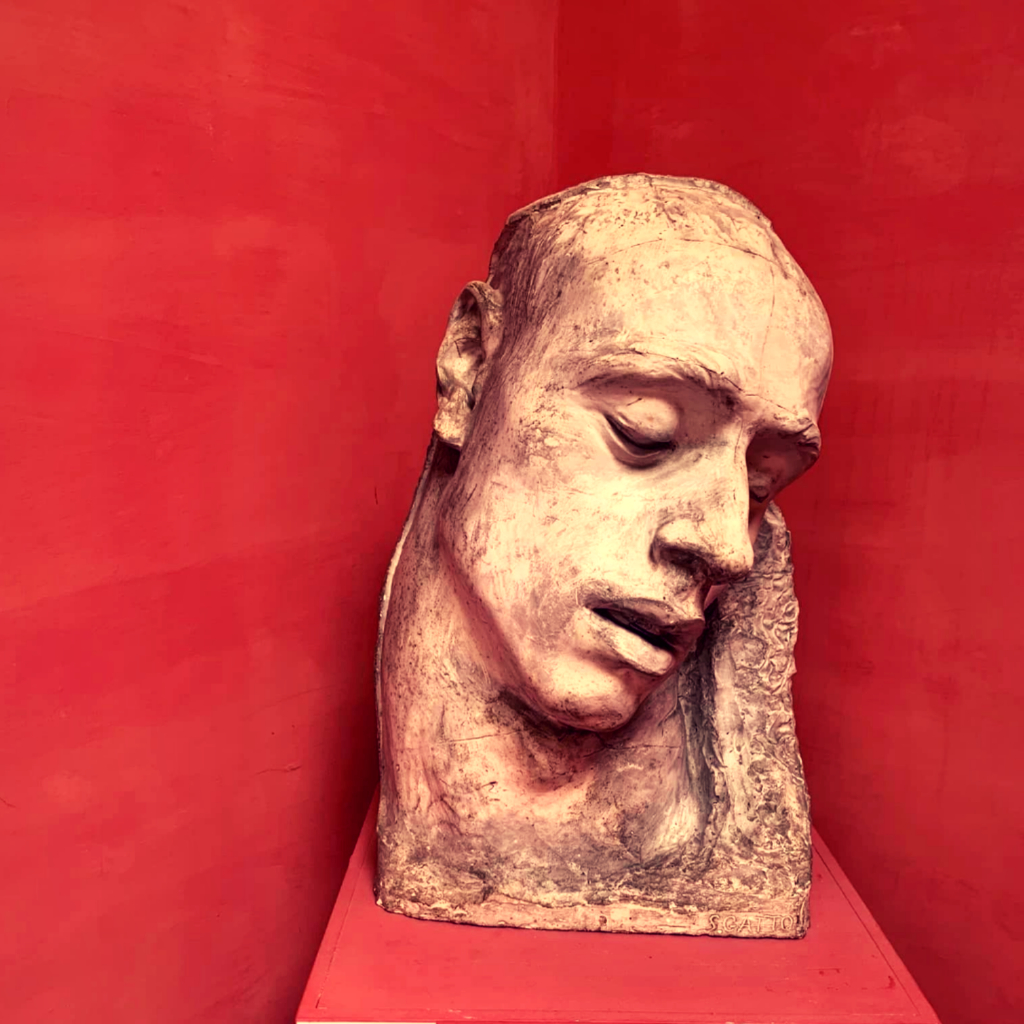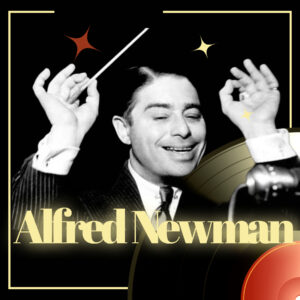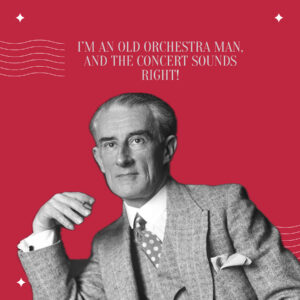
Great American Songbook is a term that refers to musicians linked to the music scene of Broadway theatres and the Tin Pan Alley, historic Neyorkese music publishing company operating in the early 20th century, in a period that begins in the 20s and ends in the 60s, with the advent of rock and roll.
Whether or not they belong to this group is not well defined, so there is often controversy over who should be considered. Mainly, all those composers, lyricists and singers who have composed or interpreted some of the major standards of jazz are part of the Great American Songwriter. Among the authors: George and Ira Gershwin, Duke Ellington, Harold Arlen, Cole Porter, Irvin Berlin, Jerome Kern, Richard Rodgers, Vernone Duke, Jonny Mercer, Hart Lorenz. Starring: Ella Fitzgerald, Sarah Vaughan, Billie Holiday, Nat King Cole, Bing Crosby, Frank Sinatra, Chet Baker.
The “GAS”, as it is often abbreviated in the United States, is still the reference for the repertoire of jazz musicians around the world, and for its fans represents a level of musical sophistication that has not yet been equaled.
It’s known that there are thousands of standards written by different authors and lyricists in that period of time that identifies the golden age of jazz standards, intended for Broadway theaters or cinema rather than dance clubs.
So it’s very complicated to make a list of the most important standards of the jazz repertoire so I’ll just make a provisional list of some songs that I think are fundamental.
1. Stella By Starlight (1946, Victor Young – music, Ned Washington – lyrics)
Victor Young and his orchestra introduced “Stella by Starlight” in the 1944 Paramount film, The Uninvited, a ghost story with Ray Milland, Ruth Hussey and Gail Russell. While Young’s composition was written as the film’s recurring theme, the song itself became a dramatic focal point when Milland’s character, Rod, serenades his Stella, played by Russell. Looking out the window while Rod is on the grand piano, Stella asks what he is playing. Rod replies, “It’s a serenade.
2. Round Midnight (1944, Thelonious Monk – music, Bernie Hanighen – lyrics)
Round Midnight is the most famous Jazz Composition by Thelonious Monk and has the great distinction of being the most recorded jazz standard by jazz musicians. The Monk CD, Best of the Blue Note Years, documents the 1947 group registration of “‘Round Midnight” (1991, Blue Note 95636). A solo version from 1957 is available on Thelonious Himself (1991, Orig. Jazz Classics 254).
3. Someone to watch over me (1926, George Gershwin – music, Ira Gershwin – lyrics)
On November 8, 1926, the musical “Oh Kay!” opened at the Imperial Theatre and during that memorable performance Gertrude Lawrence presented to the public a song entitled “Someone to Watch over Me”. “Oh Kay!” would have a great success on Broadway, racing for 256 shows before crossing the Atlantic for a London version in 1927. The musical would again achieve success in an Off-Broadway revival in 1960 and again on Broadway in 1990.
4. Over The Rainbow (1938, Harold Arlen – music, Hyp Harburg – lyrics)
Judy Garland introduced “Over the Rainbow” in MGM’s 1939 film, The Wizard of Oz. Principal photography began in October 1938 at the Grauman’s Chinese Theatre in Hollywood on August 15, 1939, and at the Capitol Theatre in New York City on August 17, 1939.
A few days before the two premieres, the recordings of “Over the Rainbow” were climbing the pop charts with Glenn Miller and Larry Clinton leading the group. In mid-September four recordings were in the top ten
Glenn Miller and his orchestra (Ray Eberle, voice, #1)
Larry Clinton and his orchestra (Bea Wain, voice, #10)
Bob Crosby and his orchestra (Teddy Grace, voice, #2)
Judy Garland (with Victor Young and his orchestra, #5)
And in 1960, the successful recording of Dimensions went up to number sixteen on the pop charts.
5. Come rain or come shine (1946, Harold Arlen – music, Johnny Mercer – lyrics)
“Come Rain or Come Shine” was introduced by Ruby Hill and Harold Nicholas in the Broadway musical St. Louis Woman. Set in St. Louis in 1898, the story revolved around Della Green (Hill), a woman who wants out of her relationship with bar owner Biglow Brown (Rex Ingram) when she falls in love with Li’l Augie, (Nicholas). The show opened on 30 March 1946 at the Martin Beck Theatre with poor reviews and attendance and ended after only 113 performances.
6. Blues in the night (1941, Harold Arlen – music, Johnny Mercer – lyrics)
“Blues in the Night” was written by composer Harold Arlen and lyricist Johnny Mercer for a 1941 film originally titled Hot Nocturne that became Blues in the Night because of the song’s appeal. The song, nominated for an Academy Award, was included in the film as background music, as an instrumental played by the band in front of the camera and sung by William Gillespie.
7. Autumn in New York (1934, Vernon Duke words and music)
Vernon Duke’s composition was written for the 1934 show “Thumbs Up!” introduced by J. Harold Murray. Thirteen years later it rose to number 27 on the pop charts thanks to a beautiful vocal version of Frank Sinatra.
8. April in Paris (1932, Vernon Duke – music, Yip Harburg – lyrics)
The 1932 Broadway magazine Walk a Little Faster introduced “April in Paris”, composed by Vernon Duke and the lyricist EY “Yip” Harburg. The production was starring comedians Bobby Clark and Paul McCullough and actress/singer Beatrice Lillie. This was the first time Duke had written the complete soundtrack to a show and “April in Paris” was not originally part of it. Set designer Boris Aronson had created a setting on the Left Bank for a number and the producers wanted a romantic song. Duke and some friends and co-workers were arguing when someone (presumably Dorothy Parker) expressed a desire to be in Paris during April.
9. Sophisticated Lady (1933, Duke Ellington – music, Mitchell Parish – lyrics)
Duke Ellington and his orchestra introduced “Sophisticated Lady” with a 1933 recording that included solos by Toby Hardwick (alto sax), Barney Bigard (clarinet), Lawrence Brown (trombone) and Ellington (piano). The recording entered the pop charts on May 27 and remained there for 16 weeks, rising to number three. The flip side, “Stormy Weather”, enjoyed almost the same luck, climbing to number four. ” Stormy Weather” by Ted Koehler and Harold Arlen had been introduced by Leo Reisman and his orchestra (Harold Arlen, vocals) earlier that year, and Duke Ellington’s cover was just one of many that year.
10. Lush Life (1949, words and music by Billy Strayhorn)
In 1933 a teenager Billy Strayhorn started working at “Lush Life”. He would perfect his composition in the following years and in 1938, at the Stanley Theatre in Pittsburgh, Strayhorn played piano and sang for Duke Ellington. Ellington’s son later recalled that “Lush Life” and “Something to Live For” were responsible for Ellington’s hiring of Strayhorn as arranger in early 1939. This will mark the beginning of their legendary collaboration.
11 – BONUS – I fall in love to easily (1944, Jule Styne – music, Sammy Cahn – lyrics)
Composer Jule Styne and lyricist Sammy Cahn wrote “I fall in love too easily” for the 1945 film Anchors Aweigh, which was a great success for the MGM studio. Co-star Frank Sinatra, who had had several hits with Styne/Cahn’s songs, asked them to write songs for the film in which he introduced the Oscar-nominated song “I Fall in Love Too Easy”. The film won the Academy Award for Best Music and Soundtrack of a Musical Film (George E. Stoll). (The film’s title is also the title of the song of the United States Navy, composed in 1906 by Charles A. Zimmerman with lyrics by Alfred Hart Miles.)
Article by Girolamo Campanino, the owner of Accademia Europea di Musica e Arti – AEMAS



